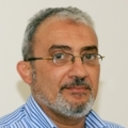Effects of the anti-receptor activator of nuclear factor kappa B ligand denusomab on beta thalassemia major-induced osteoporosis.
Palabras clave
Abstracto
BACKGROUND
Osteoporosis represents the second most common cause of endocrinopathy in patients with beta thalassemia major (BTM). Some drugs proved effective to reduce vertebral and non-vertebral fracture risk. Denosumab is a fully human monoclonal antibody to the receptor activator of nuclear factor kappa B ligand (RANKL), a member of the tumor necrosis factor receptor superfamily essential for osteoclastogenesis. The efficacy and safety of denosumab in BTM-induced osteoporosis has not been tested.
OBJECTIVE
To evaluate the efficacy and safety of anti-RANKL on the biochemical and radiological parameters of bone mineralization in patients with BTM-induced osteoporosis.
METHODS
The study population was selected using the random sampling method from the patient's database of our thalassemia clinic. Transfusion-dependent BTM patients above 18 years with no history of treatment with bisphosphonates were randomly selected. Bone mineral density (BMD) of the lumbar spine (LS) and right femoral neck (FN) were measured by dual energy X-ray absorption (DEXA) scan using a calibrated method. Independent factors likely to be associated with low bone mass were determined and included in the analysis to ascertain possible associations.
METHODS
We studied 30 patients with BTM-induced osteoporosis as per World Health Organization criteria (T Score of less than - 1.0 being defined as osteopenic and a T Score of less than - 2.5 being referred as osteoporotic). 19 males and 11 females aged between 18 and 32 years, with full pubertal development (Tanner's stage 5) at the time of the study. Their mean serum ferritin concentration was 3557 ng ± 1488 ng/ml. Every patient underwent DEXA scan as a baseline and after 12 months of denosumab therapy. Biochemical evaluation including serum concentrations of creatinine, Na, K, calcium, phosphorus, parathormone, bone specific alkaline phosphatase and type 1 collagen carboxy telopetide (ICCT) using enzyme-linked immunosorbent assay (Nordic Bioscience Diagnostics A/S) was done at baseline, after a month and then every 3 months for 12 months after starting denosumab. 60 mg of denosumab was administered subcutaneously twice yearly for a year. The mean BMD T Scores at baseline were -2.7 at the LS and -2.1 at the FN.
RESULTS
Denosumab therapy for a year was associated with a significant increase in BMD of 9.2% (95% confidence interval [CI], 8.2-10.1) at the LS and 6.0% (95% CI, 5.2-6.7) at the FN. Denosumab treatment decreased serum ICCT levels by 56% at 1 month and normalized them in all patients at 1 year. Significant correlations were found between BMD T Score before and 1 year after denosumab in LS (r = 0.752, P < 0.001) and FN (r = 0.758 P < 0.001), respectively. The most common side effects were pain in the back and extremities (12%) and nausea (10%). Asymptomatic hypocalcaemia occurred in two patients.
CONCLUSIONS
Denosumab therapy for a year significantly increased BMD density at LS and FN of patients with BTM and was associated with a rapid and sustained reduction in ICCT levels. Further studies are required to confirm long-term effects of this therapy.


